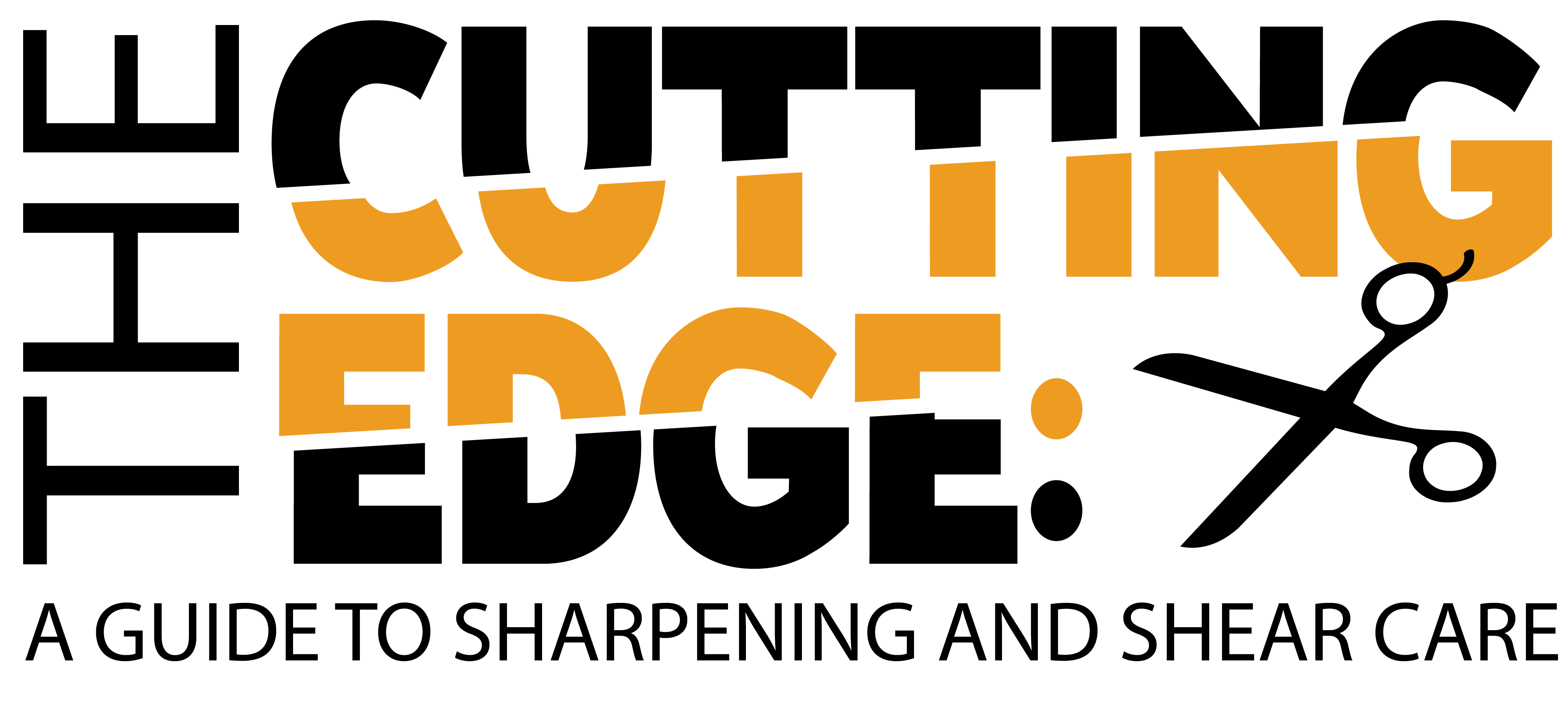
Photos by Matthew Runkle
 s a trade professional, your equipment is essential and critical to your ability to perform your job. The condition of your equipment can make a difference in the quality of work you produce, as well as reduce wear and tear on your body. Your shears can be a significant investment and can cost upwards of a few hundred dollars for a good pair; therefore, we must maintain our shears by regularly cleaning them and storing them properly to protect those delicate sharp edges, as well as use them as they were designed.
s a trade professional, your equipment is essential and critical to your ability to perform your job. The condition of your equipment can make a difference in the quality of work you produce, as well as reduce wear and tear on your body. Your shears can be a significant investment and can cost upwards of a few hundred dollars for a good pair; therefore, we must maintain our shears by regularly cleaning them and storing them properly to protect those delicate sharp edges, as well as use them as they were designed.
Another important aspect is routine maintenance of the shears, including sharpening and repairs if and when necessary. There are two ways to go about this: One way is to send shears to the manufacturer and have them use their in-house sharpener to touch up your shears.
(Keep in mind, this could take up to a week or more to have them returned so having a backup set is crucial.) The other way is using a local sharpener that is in your area. This does allow for a quicker return time, but there could be a trade-off with the quality of the sharpening. Having a relationship with a knowledgeable and qualified sharpener can greatly help. Unfortunately, as with any industry, not everyone is out to be the best that they can be or have the focus and integrity to provide high-quality work; some are just out to make a paycheck and this is the trade they chose to work in.

 What style of machine will you be using to sharpen my shears?
What style of machine will you be using to sharpen my shears?
The shears that groomers and beauticians use are delicate precision instruments and require a sharpening technique that matches. A quality sharpener should be using a flat hone-style machine. These machines are ideal for beauty, barber and grooming shears, as they can sharpen convex and semi-convex edges. Also, this type of machine is less aggressive than a vertical stone grinder (a bench grinder) which removes too much metal, therefore shortening the lifespan of the shear and can typically only provide a beveled edge.
 What is your goal when sharpening my shears? (Or ask them to explain their process to you of how they will sharpen them.)
What is your goal when sharpening my shears? (Or ask them to explain their process to you of how they will sharpen them.)
Most sharpeners will answer with a puzzled look on their face, “To make them sharp,” which is fine for an answer, but it’s one-dimensional and could allude to a sharpener that doesn’t have your best interest in mind. What we want to hear is an answer that tells us that the sharpener cares about their craft, the quality of work they turn out, and what is in the best interest of the pair of shears and you. So, answers like, “To remove as little metal as possible,” “Preserve the intended edge for the type of shear,” or “Restore the proper edge to the shear if there is enough metal to do so,” demonstrate that the sharpener will take a few moments to evaluate the shear and do what is best for that shear and not just run it across a stone a couple of times and hand it back.
Simply asking these two questions can save us some heartache of being handed back a pair of shears that have been just short of ruined or, at the very least, their lifespan greatly shortened.
Just one bad sharpening can knock years of service off a pair of shears, so it’s OK to be discriminant when choosing a sharpener.


 Do my shears feel rough or like the edges are catching against each other?
Do my shears feel rough or like the edges are catching against each other?
If they are, it is time to have them sharpened. Shears that are sharp and have the correct tension should feel smooth when opened and closed. High-end shears and shears that have been sharpened properly to maintain their correct edge should produce little to no noise when opened and closed. Curves, chunkers and thinners may have some noise, but the opening and closing should feel smooth without the teeth of the “comb” blade catching the smooth edge.
 Did I drop my shears or did they get knocked off a table?
Did I drop my shears or did they get knocked off a table?
If so, don’t continue to use them. Inspect them for knicks or dents in the blade and have the set checked to make sure they weren’t bent with the impact, as this could cause further damage with continued use.
 Has it been longer than three months since I last had my shears sharpened?
Has it been longer than three months since I last had my shears sharpened?
Depending on how many grooms you’re doing each week, your shears should be sharpened anywhere from every eight to 20 weeks (roughly every three to five months), depending on the quality of the shear and the caliber of the previous sharpening.
 The quality of the shear.
The quality of the shear.
The quality of the metal used to manufacture the shear can have a dramatic effect on how frequently a shear needs to be sharpened. The cheaper the metal, the less time it can hold an edge and retain its sharpness. The higher the quality of the metal, the longer it can retain its edge and stay sharp.
 Improper sharpening.
Improper sharpening.
Whether it is a Japanese-style shear or a German-style shear, each are designed to function with a specific edge type for their style. When sharpened improperly, meaning the sharpener changes the type of edge out of convenience or the angle without just cause, this can cause the sharp edges to work against the design, dulling or damaging the shear which facilitates the need for more frequent sharpening.
 The user’s technique.
The user’s technique.
Your technique or how you use the scissors can affect how long they maintain their sharp edge. Shears are designed for only one blade to be moving (the thumb blade) while the other blade (the finger blade) remains stationary. When you move both blades, you cause inappropriate force or tension against the blades when they come together and that causes them to wear each other down, making the edge dull sooner.
 Proper tension.
Proper tension.
Every shear is designed to operate with a certain amount of tension which controls the amount of force the sharp edges apply to each other as they close. Tension has a direct effect on how well the shears operate and the health of our hands and wrists. If the tension is too loose we can experience things like hair folding or having to use an improper technique to get the desired cut. If the tension is too tight we have to use more force to open and close the shear, thus increasing fatigue in our hands and wrists and the development of musculoskeletal disorders like carpal tunnel syndrome or trigger finger. Either way, both result in improper wear of the sharp edges and can cause the shears to have to be sharpened more frequently. The tension should be checked every few days and adjusted when needed.
 Keeping them clean.
Keeping them clean.
You must clean your shears after every groom. Small hairs, dust/skin particles, and excess oil can accumulate at the entry and within the pivot and tension hardware leading to the blades loosening and causing them to make contact with each other, therefore improperly dulling the edge. Also, shears that are put away wet can rust, potentially ruining the shears and ending their working lifespan.
 Proper storage and handling.
Proper storage and handling.
How we handle and store our shears can also have an impact on how long they maintain their sharp edge. If scissors are thrown around, dropped or banged together from being stored loosely, they can become nicked and damaged, thus affecting the way they cut. If the blade or sharp edge of the scissor is nicked deep enough, there is a chance those scissors won’t be able to be repaired, therefore ending their lifespan. Or, at the very least, the sharpener will have to remove a significant amount of metal to create a new edge which could also cause some alterations to be made to the shear, such as shortening the length or even changing the angle of the blade.






 Exposure to chemicals or cleaning products.
Exposure to chemicals or cleaning products.Be careful with what your shears come into contact with as far as cleaning agents or other chemical-based products. Many can be corrosive to steel. For example, the powder used to stop nails from bleeding is very corrosive to stainless steel. If the powder is left on even for a few minutes, it can cause discoloration of the metal. And if it is left on for longer, it can cause pitting of the metal and also expedite the development of rust. This can warrant the need for repairs, including being resharpened and polished to remove shallow pitting and discolorations. However, if the damage is too significant, it could impede the performance of the shear or end its working life altogether.
Your shears, clippers, combs and other equipment are investments. And as a small business owner and/or trade professional, you need to get as high of a return on your investments as possible, and proper care and maintenance are the best ways to ensure you achieve the longest working lifespan out of your equipment.


